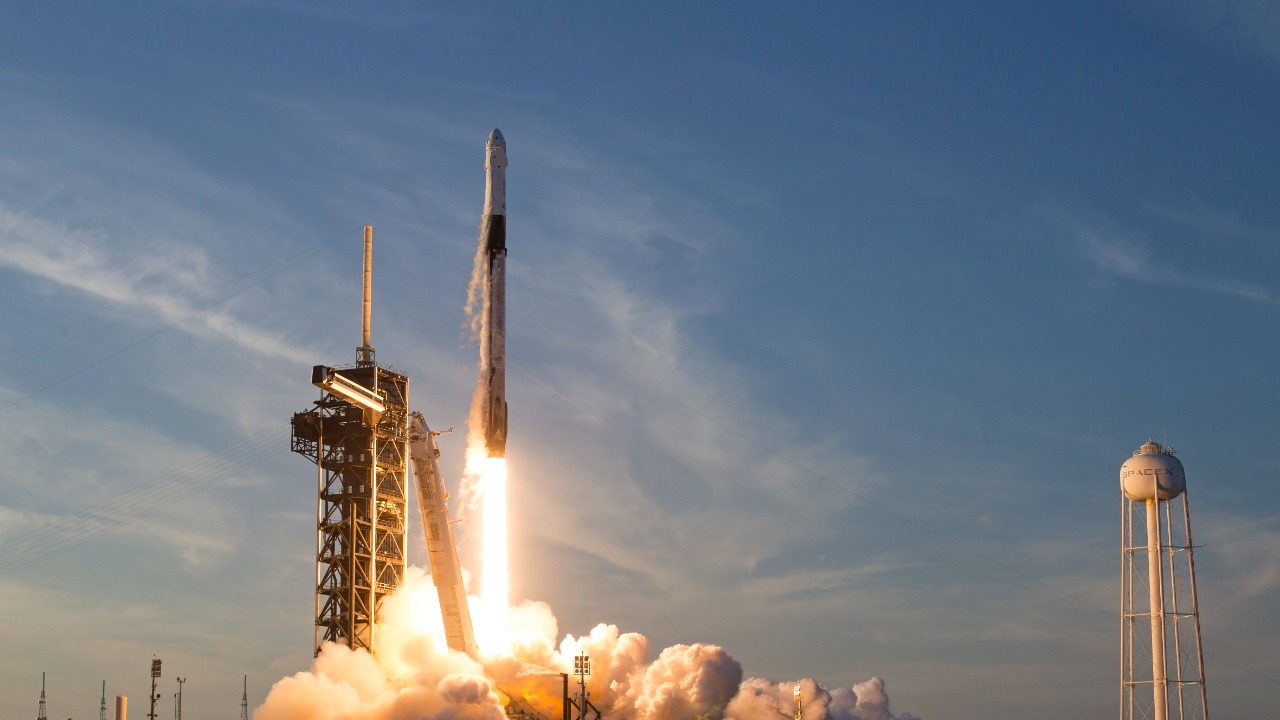
SpaceX has successfully launched 28 Starlink satellites into orbit, marking its 130th Falcon 9 flight of 2025. This mission, conducted from Cape Canaveral Space Force Station, underscores SpaceX’s aggressive launch schedule and its commitment to expanding its global internet constellation. The successful lift-off highlights the company’s operational efficiency, with this being the 130th Falcon 9 mission in the year, a testament to SpaceX’s rapid cadence in space exploration and satellite deployment.
Launch Sequence and Site
The Falcon 9 rocket, carrying 28 Starlink satellites as its primary payload, lifted off from Cape Canaveral Space Force Station. This site has been a pivotal launch point for SpaceX, facilitating numerous missions that contribute to the company’s ambitious satellite internet initiatives. The choice of Cape Canaveral is strategic, providing optimal conditions for frequent launches and quick turnarounds, which are essential for maintaining SpaceX’s high launch frequency. The mission’s success further cements the station’s role as a cornerstone in SpaceX’s operational framework, enabling the company to sustain its rapid launch pace.
This mission represents the 130th Falcon 9 flight of 2025, a significant milestone that highlights SpaceX’s operational tempo. The company has consistently utilized Cape Canaveral for its launches, demonstrating a reliable and efficient use of the site. Earlier in the month, SpaceX conducted its 126th Falcon 9 flight of the year, also deploying 28 Starlink satellites from the same location. This consistency in operations not only showcases SpaceX’s capability to manage a high volume of launches but also underscores the reliability of the Falcon 9 rocket in achieving mission objectives.
Falcon 9 Mission Milestones
The 130th Falcon 9 flight of 2025 was dedicated to deploying Starlink satellites, continuing the rocket’s pivotal role in SpaceX’s satellite internet initiatives. This mission reflects the Falcon 9’s reliability and versatility, having been used extensively across multiple missions to deploy satellites that enhance global broadband coverage. The rocket’s success in this mission is a testament to its engineering and the rigorous testing protocols that SpaceX employs to ensure mission success.
SpaceX achieved this 130th launch within the calendar year 2025, a remarkable feat that underscores the Falcon 9’s reliability across numerous missions. The rocket’s consistent performance from sites like Cape Canaveral has been instrumental in maintaining SpaceX’s high launch cadence. This achievement not only highlights the Falcon 9’s capabilities but also positions SpaceX as a leader in the commercial space industry, setting a benchmark for launch frequency and operational efficiency.
Building on the 126th flight on October 7, 2025, the progression to 130 flights illustrates SpaceX’s accelerated schedule for Falcon 9 operations. The rapid succession of launches demonstrates the company’s ability to manage complex logistics and maintain a steady pace of satellite deployments. This capability is crucial for meeting the growing demand for satellite internet services and expanding SpaceX’s global coverage.
Starlink Satellite Deployment
Exactly 28 Starlink satellites were launched to orbit during this mission, aimed at enhancing broadband coverage. The deployment of these satellites is a critical component of SpaceX’s strategy to provide high-speed internet access to underserved and remote areas worldwide. By increasing the number of satellites in orbit, SpaceX can improve the quality and reliability of its internet services, making it a viable option for users in areas with limited connectivity.
The deployment of these 28 satellites occurred as part of the 130th Falcon 9 flight on October 16, 2025, from Cape Canaveral. This mission is part of a broader effort to expand the Starlink constellation, which is designed to provide global internet coverage. The successful deployment of these satellites is a step forward in achieving SpaceX’s goal of creating a comprehensive satellite network that can deliver high-speed internet to users around the globe.
A prior deployment of 28 Starlink satellites took place on the 126th Falcon 9 flight of 2025, dated October 7, 2025, showing repeated batch sizes in recent operations. This consistency in satellite deployment not only demonstrates SpaceX’s operational efficiency but also highlights the company’s commitment to rapidly expanding its satellite network. By maintaining a steady pace of launches, SpaceX can quickly scale its operations and meet the increasing demand for satellite internet services.
SpaceX’s 2025 Launch Cadence
Reaching the 130th Falcon 9 flight in 2025 positions SpaceX as a leader in orbital launch frequency. The company’s ability to conduct such a high number of launches within a single year is a testament to its operational capabilities and strategic planning. This achievement not only highlights SpaceX’s dominance in the commercial space industry but also sets a new standard for launch frequency and efficiency.
The Cape Canaveral launch of 28 Starlink satellites on October 16, 2025, contributes to this year’s total of 130 missions. This milestone reflects SpaceX’s commitment to maintaining a high launch cadence, which is essential for meeting the growing demand for satellite internet services. By consistently launching satellites, SpaceX can expand its network and improve the quality of its services, providing users with reliable and high-speed internet access.
The 126th flight on October 7, 2025, with another 28 Starlink satellites, underscores the steady buildup to the 130th milestone. This progression highlights SpaceX’s ability to manage complex logistics and maintain a rapid pace of operations. The company’s success in achieving this milestone is a testament to its engineering prowess and strategic vision, positioning SpaceX as a key player in the global space industry.
For more detailed information on the launch and its implications, visit Space.com, VOI, Mezha, UPI, and Space Coast Daily.